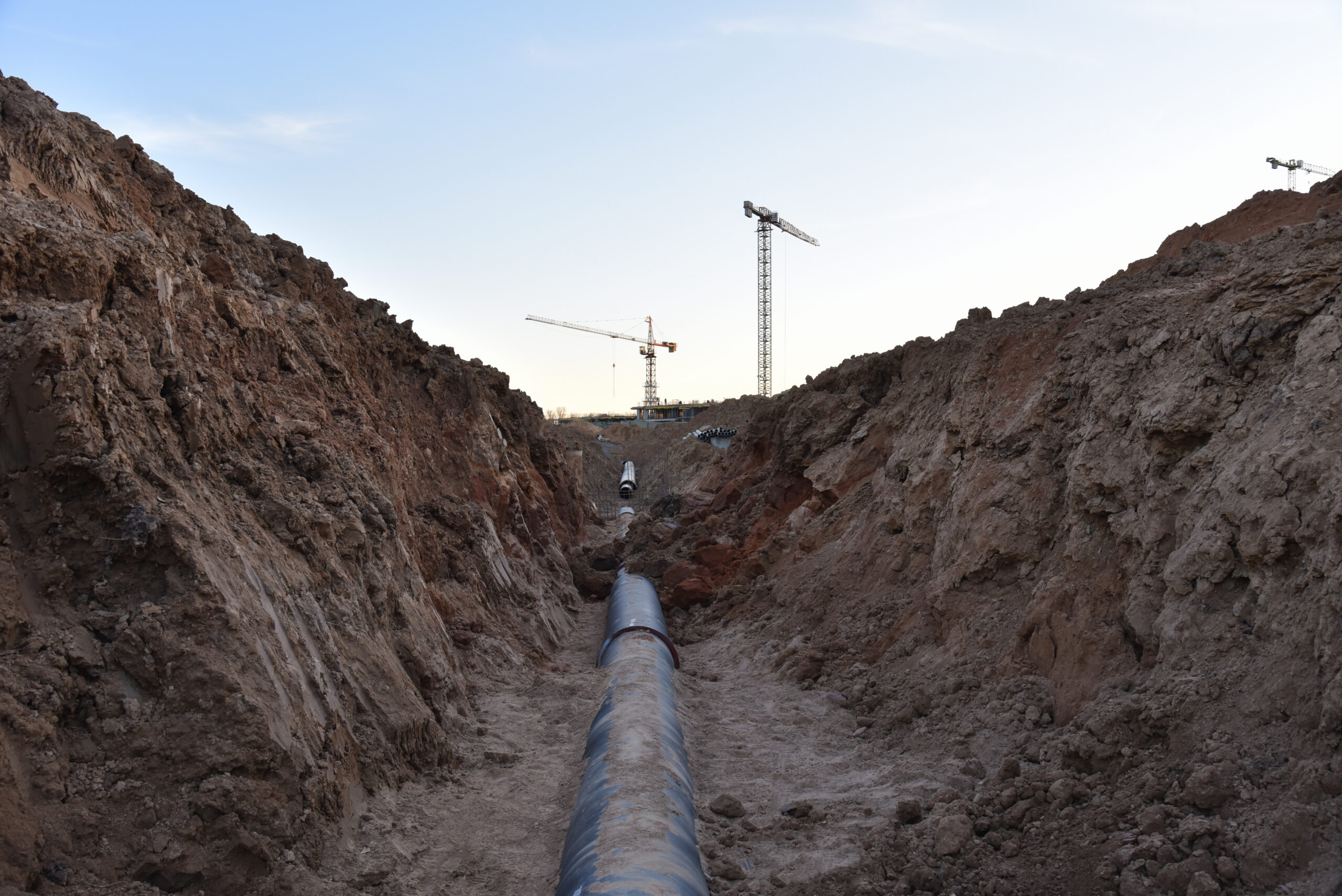
Extending water and sewer infrastructure in new basins not served (or underserved) by utilities requires careful planning and collaboration between private developers, utility providers, and local planning jurisdictions.
A water and sewer service basin is a defined geographic area where a utility provider supplies water and manages wastewater collection, treatment, and disposal. The boundaries of a service basin are determined based on factors such as infrastructure capacity and coverage, population density, hydrology, and service area agreements. The provider establishes and maintains infrastructure within a service basin, including water supply lines, sewer lines, pumping stations, and treatment facilities, to deliver clean water and adequately manage wastewater. The utility provider plans for infrastructure expansion within the basin based on projected growth in the area. In fast-growing metros, development can outpace capital infrastructure plans; in this case, private developers typically extend and expand infrastructure to accommodate new growth in coordination with utility providers and local planning jurisdictions.
When designing new sewer infrastructure, utility providers build gravity or force main lines, depending on an area’s topography and geology. Gravity lines use the land’s natural slope to move wastewater, relying on gravity to guide the flow. Force main lines require pumps to overcome elevation differences and propel wastewater through the system.
Water systems primarily use pressurized systems to distribute water. Pressurized water distribution systems rely on pumps to maintain consistent and controlled pressure throughout the network. Water is pumped into the system at a higher pressure, allowing it to flow to consumers’ taps and fixtures. This pressurized system ensures that water reaches all distribution network areas, including areas with varying elevations or uphill locations. Unlike gravity systems, which rely on the natural downward flow, pressurized water systems provide the flexibility to distribute water to higher elevations and overcome terrain challenges.
Utility providers and local governments may require developers to oversize utility lines to accommodate future growth and avoid costly expansions. This approach involves installing larger infrastructure than necessary for a single project to account for future sewer demand and prevent the need for parallel installations later. For example, instead of a 12-inch force main line for a single residential project, a 16-inch line may be required to accommodate future demands. The public utility or local government should cover the cost of oversizing through cost-share arrangements to ensure fair allocation of the added financial burden.
In new basins with multiple developers requiring expanded water and sewer capacity, one developer may enter into cost-sharing agreements with other developers to equitably distribute the financial responsibility. These agreements consider factors such as land area, anticipated usage, and projected growth to allocate costs.
In either case, the first developer in an unserved or underserved basin often bears a higher cost burden for initiating infrastructure improvements. Additionally, local and state laws may not address or require cost-sharing arrangements, leaving the first mover reliant on voluntary agreements with public utilities and other developers to share costs.
When considering the design and cost of new sewer infrastructure, it is crucial to understand the difference between actual and calculated flow (or paper flow). Calculated flow refers to estimated sewage flow rates based on factors such as population density, building occupancy, and predicted water usage. Actual flow considers real-time data and usage patterns and represents the actual flow rates of wastewater through a system. Utility providers establish infrastructure sizing requirements for new development based on minimum calculated flow rates, typically set by state law and local ordinance or policy.
Continuing improvement and implementation of water conservation measures can result in actual flow rates substantially lower than the minimum calculated flow requirements. Consequently, new wastewater lines may be oversized to provide unnecessary future capacity. On the other hand, climate change and natural weather events can put an unanticipated strain on wastewater systems. Rising sea levels, extreme rainfall events, and storm surges can overwhelm existing sewer infrastructure, with an influx of excess water into the sewer system exceeding its capacity, causing backups, overflows, and system failures. Additionally, flooding can introduce contaminants, such as pollutants and bacteria, into the wastewater system, further complicating treatment processes downstream.
Changes in legislation can significantly impact the requirements for calculating sewer flow and permitting sewer line extensions. North Carolina, for example, recently passed legislation changing the minimum calculated flow rates for wastewater systems. The legislation allows wastewater treatment systems to calculate wastewater flows for new residential units at 75 gallons per day per bedroom or a lower rate approved by the NC Department of Environmental Quality. This change represents a significant reduction in the minimum calculated flow previously required by the state for new sewer infrastructure. It will impact the design, cost, and capacity of new systems across the state for utility providers and private developers.
Navigating water and sewer infrastructure planning and expansion requires a significant investment of time and resources by utility providers, local governments, and private developers to meet current and future demands. With the added impacts of climate change and a shifting regulatory landscape in communities across the country, building resilient and cost-effective infrastructure will require more collaboration among public and private stakeholders.
Innovate P3 works with local governments, utility providers, and private developers to create partnerships and equitable cost-sharing arrangements for water and sewer infrastructure planning and development in urban and rural communities.
